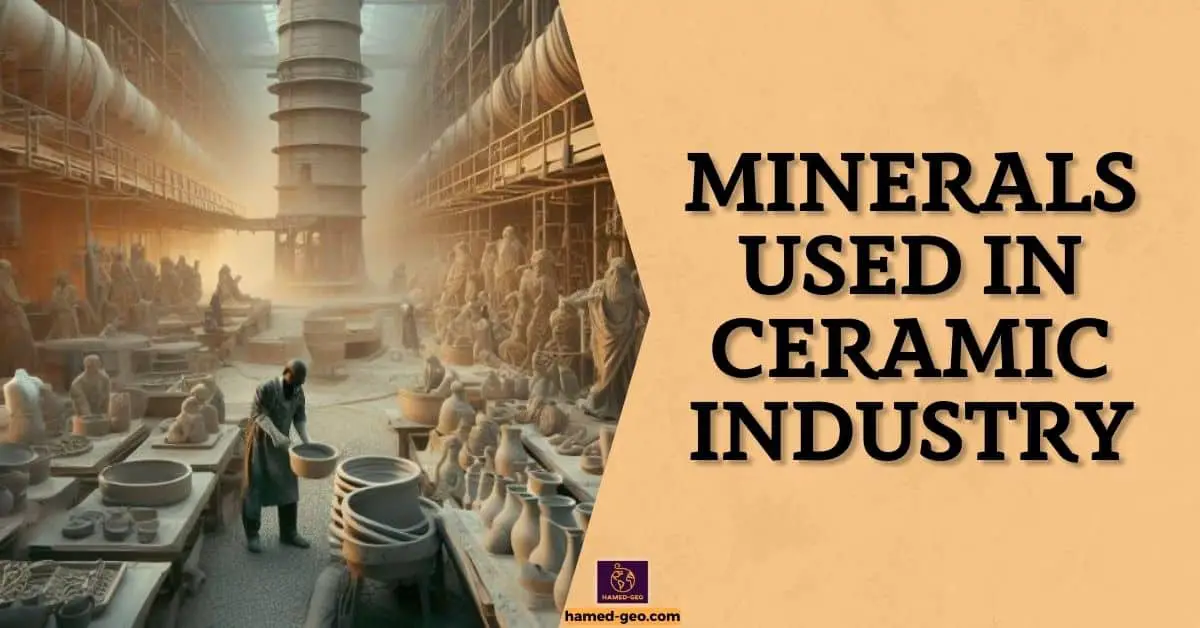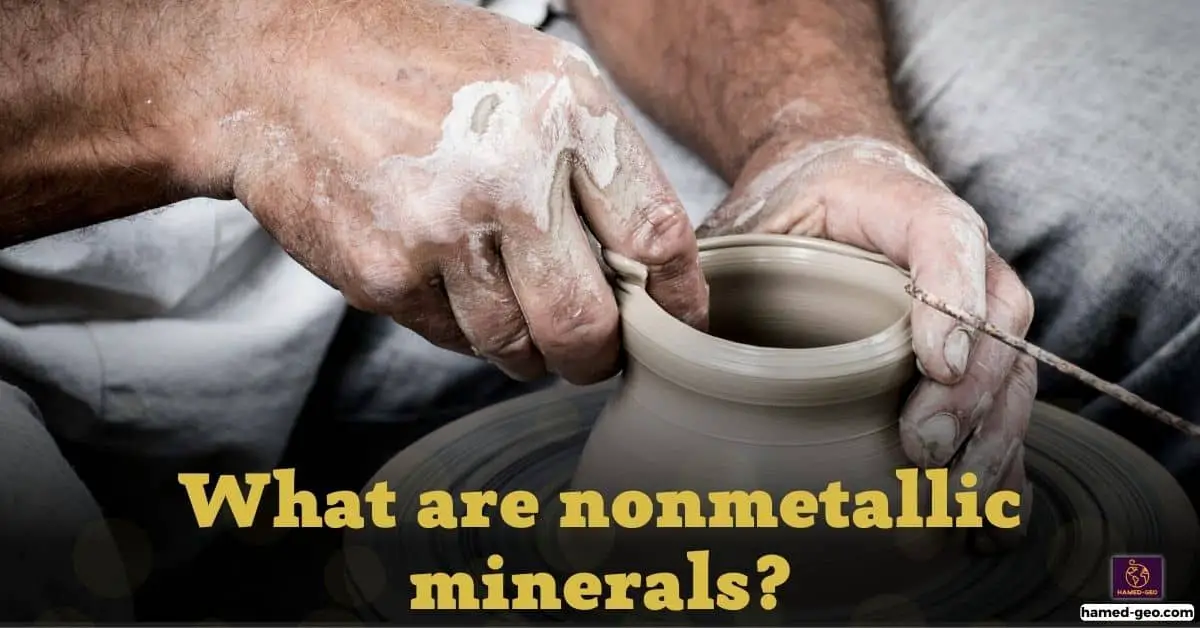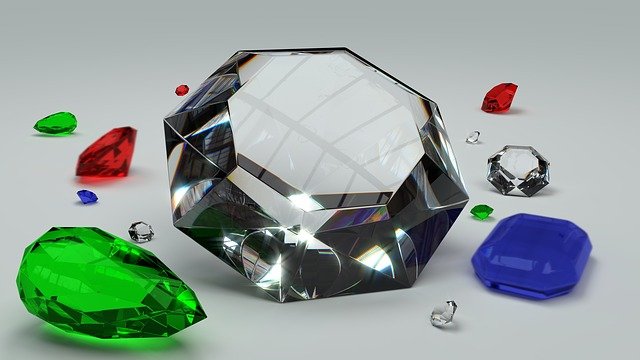The ceramic industry largely relies on specific minerals, each contributing unique properties to ceramic products. The minerals used in this industry are integral to the production of a wide range of items, from household ceramics to industrial ceramics. Understanding the importance of these minerals underscores the interconnection between the ceramic industry and the mining sector. Kaolin, talc, silica, and feldspar are among the essential minerals used in this industry.
For example, kaolin, a type of clay, is one of the most common minerals used in the ceramic industry due to its heat resistance and white color, which makes it ideal for porcelain products. On the other hand, talc is used in the production of low-temperature ceramics due to its heat-resistant properties. Silica serves as the primary component of most types of glass and ceramics, while feldspar acts as a fluxing agent, reducing the melting temperature of quartz and helping to control the viscosity of glass. By examining these minerals’ roles in ceramics, the significance of the ceramic industry’s reliance on various minerals becomes clear.
Clay
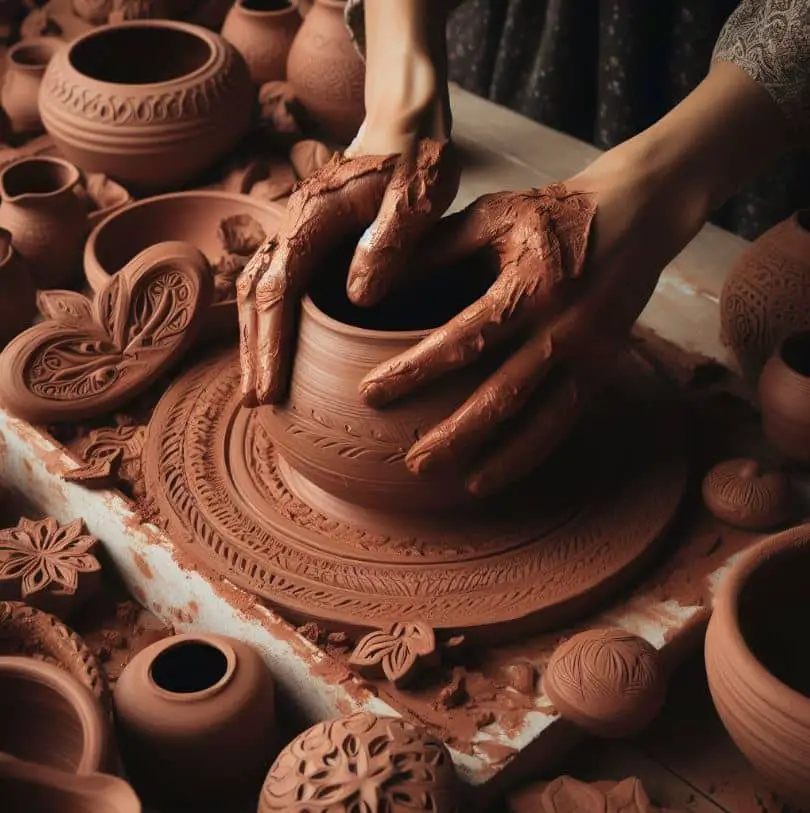
The discussion of Clay commences by examining its Properties and Uses, exploring the inherent characteristics that make it a versatile material in various fields. This is followed by an analysis of the Types of Clay Used in Ceramics, which delves into how different clays contribute to diverse ceramic outcomes. Lastly, the Sources of Clay are identified, providing insight into the geographical distribution and extraction methods of this valuable resource.
Properties and Uses
Imagine the versatility of a material that transforms from a pliable substance to a resilient and robust masterpiece. That’s right, this section explores the properties and uses of clay.
Clay, in its most basic form, is a fine-grained natural rock or soil material containing minerals. It exhibits plasticity when wet, yet hardens upon heating, thus making it a favored material for pottery and ceramics. Primarily composed of hydrated silicates of aluminum, clay is classified based on particle size, not mineral content. Its unique quality called ‘plasticity’ enables it to be molded into various shapes, which harden when dried or fired.
Clay’s uses extend beyond pottery and ceramics. In the construction industry, clay serves as a pivotal ingredient in brick-making. In the realm of health and beauty, clay finds applications in skincare products due to its ability to absorb impurities. Furthermore, clay acts as a binding agent in pharmaceuticals, enhancing the efficacy of medicines. Clearly, clay’s diverse properties pave the way for its myriad uses.
Types of Clay Used in Ceramics
Diving deeper into the world of ceramics, one encounters a myriad of clay types each with unique properties. Earthenware, for instance, is a common type of clay used for making pottery. It’s fired at relatively low temperatures and tends to be porous and opaque. It’s the clay of choice for creating decorative pots, tiles, and sculptures.
Stoneware is another popular choice, known for its durability and strength. Fired at high temperatures, this clay possesses a stone-like quality and is often used for dinnerware, cookware, and outdoor pottery.
For those seeking refinement, Porcelain is the highest quality clay used in ceramics. It’s non-porous, translucent, and fired at the highest temperatures, making it ideal for fine art and high-quality dinnerware.
Lastly, Ball clay is a secondary clay combined with other types to improve plasticity and workability. It’s a critical component in many ceramic recipes.
Sources of Clay
Transitioning from the multifarious utilities of clay, let’s delve into its origins. The sources of clay are as varied as their applications, with each source imparting distinct properties to the clay.
Primarily, clay is sourced from parent rocks, such as granite or basalt, through the process of weathering. Over time, the action of wind, rain, and temperature changes cause these rocks to break down into a fine, earthy material known as primary clay or kaolin. This primary clay is usually found near the original parent rock and tends to be light in color due to low iron content, making it ideal for making high-quality porcelain.
Secondly, there is secondary clay which is clay that has been transported from its original location by water, wind, or ice. Often found in river beds, this clay is darker and more plastic due to the mixture of organic material and minerals. This clay is widely used in making pottery and bricks.
Feldspar
The abundant mineral, Feldspar, boasts unique properties and diverse uses that merit exploration. Of particular interest is its significant application in the ceramics industry, necessitating a closer look at the specific types of feldspar utilized. To fully appreciate its impact, an investigation into the principal sources of feldspar extraction is paramount. These components collectively provide a comprehensive understanding of Feldspar in both a practical and industrial context.
Properties and Uses
Shifting gears from the malleability of clay, Feldspar emerges as a prominent player in the ceramic industry. A key component of the earth’s crust, feldspar offers a myriad of properties that make it a versatile raw material.
With its robust physical properties, Feldspar plays a pivotal role in the production of glass, ceramics, and fillers for plastics. What makes this mineral so crucial is its ability to alter the viscosity, hardness, strength, and durability of the end product, thereby enhancing its overall quality.
Interestingly, feldspar also contributes to the aesthetic appeal of ceramics. Its low melting point allows it to act as a flux, facilitating the melting of quartz and clays and leading to a smooth, glassy finish in ceramic products.
In the realm of glass manufacturing, feldspar aids in reducing the melting temperature of quartz, considerably lowering energy costs.
Types of Feldspar Used in Ceramics
And what about when clay doesn’t fit the bill? Enter the world of feldspar, a mineral that plays a crucial role in ceramics.
Delving into the types of feldspar used in ceramics, it becomes clear that there are two primary types: potassium feldspar and plagioclase feldspar. Potassium feldspar, also known as orthoclase, provides a high melting point and hardness, making it ideal for high-temperature applications, such as porcelain. On the other hand, plagioclase feldspar, which includes minerals like albite and anorthite, offers a range of melting points and hardness levels. This versatility allows it to accommodate a wider variety of ceramic products.
In essence, the choice of feldspar type depends on the specific requirements of the ceramic material. It is through analyzing these different types, their properties, and their applications in ceramic manufacturing, that the importance of feldspar in the ceramic industry becomes evident.
Sources of Feldspar
Just as clay has diverse sources, Feldspar, too, is not constrained to a single location. In fact, it is found in abundance in various parts of the world. The largest reserves are located in Italy, Turkey, China, and the United States, specifically in states like North Carolina and Virginia.
Interestingly, these sources not only vary in geographical location but also in the variety and quality of Feldspar they yield. For instance, the Feldspar from Italy is renowned for its exceptional quality and unique characteristics, making it highly sought after in the ceramics industry. Meanwhile, the Feldspar from Turkey is known for its ample reserves and affordability.
Given the importance of Feldspar in ceramics and other industries, these sources play a critical role in meeting global demand. Hence, the extraction and processing of Feldspar is of utmost importance to maintain its supply chain.
Quartz
Quartz, a significant mineral with extensive Properties and Uses, plays a crucial role in various industries, especially ceramics. The exploration of Types of Quartz Used in Ceramics will help us understand the mineral’s unique contribution to this industry. Furthermore, the discussion on Sources of Quartz will shed light on its global availability and extraction methods. These subtopics aim to unravel the comprehensive understanding of quartz.
Properties and Uses
Stepping away from the world of feldspar, imagine being surrounded by towering formations of sparkling crystals. Welcome to the realm of quartz, one of the most versatile and widely used minerals on Earth.
Quartz, a hard, crystalline mineral composed of silicon and oxygen atoms, possesses several properties that make it an invaluable resource in a variety of applications. Primarily, its hardness and chemical resistance make it highly durable. In fact, quartz ranks a seven on the Mohs scale of mineral hardness, indicating a strong resistance to scratching. Furthermore, quartz is also piezoelectric, meaning it can generate an electric charge in response to applied mechanical stress – a feature exploited in many electronic devices.
In the realm of ceramics, quartz is used as an essential raw material, providing strength and durability to the finished product. It is frequently used in porcelain, stoneware, and other types of ceramics, due to its ability to withstand high temperatures without altering its structure.
Types of Quartz Used in Ceramics
Moving away from the realm of feldspar, quartz comes into focus as a crucial component in ceramics. In this context, the types of quartz used in ceramics merit attention.
Firstly, macrocrystalline quartz is commonly used in ceramics due to its high thermal resistance and durability. It includes types such as rock crystal, rose quartz, and amethyst. Additionally, cryptocrystalline quartz, or chalcedony, encompasses varieties like agate, jasper, and onyx, which are prized for their unique colors and patterns.
Yet, the most common type of quartz in ceramics is microcrystalline quartz, often referred to as silica or flint. This type of quartz is critical in reducing thermal expansion and increasing thermal shock resistance in ceramic products.
In sum, the choice of quartz type in ceramics largely depends on the desired aesthetic and functional properties of the finished product. Each type contributes distinct characteristics that enhance the value and functionality of ceramic pieces.
Sources of Quartz
Moving on from feldspar, let’s look at another crucial component in ceramics. Quartz, a mineral known for its crystalline structure, exhibits unique properties that make it essential in various industries, particularly ceramics.
Delving into the sources of quartz, an interesting fact to note is that it is one of the most abundant minerals on Earth. Found predominantly in igneous, metamorphic, and sedimentary rocks, its widespread availability makes quartz a commonly used material. Quartz deposits are mined in many parts of the world, including the United States, Brazil, and Australia.
However, the quality of quartz depends significantly on its source. For instance, Brazilian quartz is often favored for its high purity levels, making it suitable for high-quality ceramics. On the other hand, quartz from some regions may require additional processing to remove impurities before it can be used in ceramics.
In essence, the source of quartz plays a critical role in determining its industrial use, particularly in the ceramics industry.
Silica
Delving into the realm of Silica, an understanding of its Properties and Uses is crucial. Primarily composed of silicon dioxide, silica’s unique properties make it indispensable in various industries. Moving on, the Types of Silica Used in Ceramics are numerous, with each type contributing to the texture, durability, and finish of ceramic products. Lastly, exploring the Sources of Silica allows for a comprehension of its availability and sustainability. Silica, commonly found in sand and quartz, is a crucial component in the earth’s crust, providing abundant resources for industrial use.
Properties and Uses
Moving from the brilliance of quartz, the narrative now shifts towards the unassuming, yet equally significant, silica. An omnipresent component in the earth’s crust, silica forms the building block of numerous types of rocks and minerals.
Silica, chemically known as silicon dioxide, exhibits diverse properties that justify its ubiquitous utilization in various industries. Its high melting point, exceeding 1600 degrees Celsius, makes it resistant to high temperatures and thus a useful component in applications that require thermal stability. Silica is also known for its hardness, measured between 6-7 on the Mohs scale, which makes it suitable for abrasive and cutting applications.
Furthermore, silica showcases chemical inertness, rendering it resistant to most acids (except for hydrofluoric acid and strong alkalies), making it a preferred choice in chemical industries. This non-reactive nature also translates into excellent electrical insulation properties, thus endorsing silica’s use in electronic devices.
Types of Silica Used in Ceramics
Moving from the fascinating world of quartz, let’s delve into its chemical cousin, silica. Particularly, its application in the ceramic industry.
Silica, the raw material for porcelain, comes in several types, each with its unique properties and uses. The most common types used in ceramics are flint, quartz, and crystalline silica.
Flint, also known as fine-grained quartz, is the purest form of silica. It is preferred for making whiteware ceramics because it burns out in firing to clear glass.
The next is quartz, which due to its hardness and chemical inertness, is utilized in the manufacturing of porcelain and other stoneware.
Lastly, there’s crystalline silica, often used in traditional ceramics, as it provides the necessary strength and durability.
Each type of silica has a distinct role, thus, understanding their properties is pivotal in mastering the art of ceramics.
Sources of Silica
Moving from the realm of quartz, let’s dive into the world of silica, a compound that plays a crucial role in various industries. Specifically focusing on the sources of silica, these can be categorized into two broad types: natural and synthetic.
Natural sources of silica are found in abundance in the earth’s crust. Sand, quartz, and rock crystal are some of the most common natural sources. For instance, sandstone and quartzite, both sedimentary rocks, contain high percentages of silica. Additionally, certain types of clay and mica also contain silica.
On the other hand, synthetic silica is produced via chemical processes. Some examples include the reaction of silicon tetrachloride with oxygen and the controlled oxidation of silicon in a flame hydrolysis process.
It is noteworthy that the source selection often depends on the desired application, as various sources yield silica with differing purities and properties. Consequently, the source of silica plays a vital role in shaping its potential applications and uses.
Calcium Carbonate
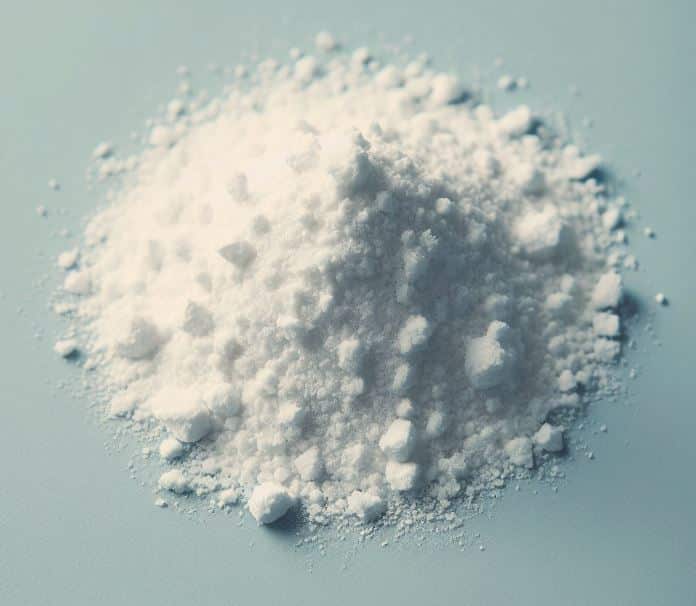
Understanding Calcium Carbonate entails knowledge of its properties and uses. Its diverse forms used in ceramics further highlight its versatility. Different types of Calcium Carbonate have unique characteristics making them suitable for specific ceramic applications. Finally, the sources of Calcium Carbonate are integral, as they affect its availability and ultimately its industrial utilization.
Properties and Uses
Moving from the siliceous realm, the exploration now dives into the world of a mineral that is yet another cornerstone in ceramic science – Calcium Carbonate. Calcium Carbonate, chemically represented as CaCO3, is a widespread mineral with a broad spectrum of applications.
An integral part of the ceramic industry, Calcium Carbonate serves as a glaze ingredient, contributing to surface smoothness, shine, and durability. Its high melting point of 1339°C enables its functionality in high-temperature processes. This mineral is also valued for its low hardness, which translates to easy grindability, and non-toxicity, making it suitable for food contact materials.
Interestingly, it acts as a flux in ceramic bodies, aiding in reducing firing temperatures and energy consumption. Furthermore, the high brightness and opacity of Calcium Carbonate qualify it as an ideal white pigment in ceramic glazes and bodies. Thus, Calcium Carbonate plays a vital role in the manufacture of tiles, sanitaryware, tableware, and other ceramic products.
Types of Calcium Carbonate Used in Ceramics
Transitioning from the crystalline world of silica, let’s immerse ourselves in the fascinating realm of calcium carbonate. A significant player in the ceramics industry, calcium carbonate comes in two primary forms: precipitated calcium carbonate (PCC) and ground calcium carbonate (GCC).
Precipitated calcium carbonate is synthetically produced by precipitating calcium ions with carbonate ions, resulting in a pure and refined form. It is preferred for its superior brightness and finer particle size, which contributes to the smoothness of ceramics and reduces porosity.
On the other hand, ground calcium carbonate is a natural mineral obtained by grinding limestone or marble. Although it has larger particles than PCC, its low cost and wide availability make it a practical choice for mass-produced ceramics. Its use enhances the hardness and durability of the product, making it suitable for tableware and tiles.
Appreciating these types of calcium carbonate reveals the intricate science behind the beauty of everyday ceramics.
Sources of Calcium Carbonate
Stepping away from the world of silica, let’s now dive into the realm of calcium carbonate. Focusing on the sources of calcium carbonate, it is important to note that it is commonly derived from a variety of natural resources.
Primarily, it can be extracted from deposits of minerals such as calcite, limestone, and marble. These are often mined in quarries and used as raw materials for a variety of products. Another major source of calcium carbonate is the shells of marine organisms. These micro-organisms absorb calcium from the seawater and convert it into calcium carbonate, which is then deposited in their shells.
Interestingly, even eggshells are a source of calcium carbonate. In fact, they are composed of around 95% calcium carbonate. On a similar note, certain types of rocks, specifically sedimentary rocks like chalk, also serve as important sources. Thus, it is clear that calcium carbonate is a resource that is abundantly available in nature.
Talc

Talc, a mineral renowned for its softness, holds significant properties and uses across various industries. A key application lies in ceramics where different types of talc are utilized according to specific requirements. Sources of Talc also merit attention, as the origin influences its chemical composition and thus, its properties and functionality. The ensuing discussion provides an in-depth exploration of talc’s properties and uses, the types of talc used in ceramics, and its diverse sources.
Properties and Uses
Bearing in mind the complexity of calcium carbonate, let’s shift our focus to another equally intriguing mineral: talc. Talc, a hydrated magnesium silicate, possesses several unique properties that make it invaluable in numerous industrial applications. For starters, it is the softest mineral known to man, with a hardness of 1 on the Mohs scale. Coupled with its greasy or soapy feel, it lends itself well to uses in cosmetics, paint, and rubber products.
This isn’t all there is to it. The mineral has a high resistance to heat and electricity, making it ideal for use in ceramics, electrical insulators, and high-temperature refractories. Moreover, it has a low reactivity and good organoleptic properties. Beyond these, talc is used in pharmaceuticals for its inert nature, in food processing as an anti-caking agent, and in plastics for its ability to enhance rigidity and heat resistance.
This all makes talc a versatile mineral with a diverse range of applications.
Types of Talc Used in Ceramics
Moving on from the world of calcium carbonate, let’s explore the realm of talc, particularly the types used in ceramics. In the ceramic industry, two types of talc command the most attention: steatite and chlorite talc.
Steatite, often referred to as soapstone, stands out for its high talc content, which often exceeds 90%. Its wide use can be attributed to its exceptional heat resistance, making it a popular choice for ceramics that need to withstand high temperatures.
On the other hand, chlorite talc, rich in magnesium, is favored for its ability to improve the thermal shock resistance of ceramic products. This type of talc is often used in the manufacturing of sanitary ware and dinnerware.
In summary, the choice between steatite and chlorite talc depends on the specific requirements of the ceramic product. These two types of talc have unique properties that make them invaluable in the ceramics industry.
Sources of Talc
Remember the discussion on calcium carbonate? Let’s leap over to another mineral, one that’s just as critical in the ceramics industry – talc. Now, onto a topic that’s rarely given the limelight – the sources of talc.
Talc is predominantly sourced from metamorphic rocks, particularly those rich in magnesium. The largest deposits of talc globally are found in China, followed by India, Brazil, the United States, and France. The Chinese Haicheng Province alone contributes to approximately 30% of the world’s total talc supply.
In the United States, most talc is mined in Vermont, New York, and Texas. Notably, the talc deposit in Vermont’s Gouverneur Talc Company is one of the largest talc-producing mines in the country.
Brazilian talc, known for its high purity, is largely extracted from the Brumado mine in Bahia.
Iron Oxide
Delving into the realm of Iron Oxide, it’s crucial to explore its various Properties and Uses. This understanding provides a solid base to discuss the specific Types of Iron Oxide Used in Ceramics. Finally, examining the Sources of Iron Oxide can shed light on its availability and extraction processes. This tripartite division provides comprehensive insights into this significant compound’s nature, application, and origin.
Properties and Uses
Continuing on from talc, let’s delve into the world of iron oxide.
Iron oxide exhibits a variety of properties which make it useful across numerous applications. It’s prized for its high heat stability and durability, along with its range in color from reds to blacks and browns.
In ceramics, iron oxide plays a crucial role. The dichroic nature of iron oxide allows ceramic artists to create products with a range of colors, depending on the oxidation or reduction atmosphere in the kiln.
Additionally, iron oxide is used in the construction industry. It’s utilized as a colorant in concrete and paints due to its high opacity and ability to withstand UV radiation.
Furthermore, iron oxide is used extensively in cosmetics, providing pigmentation to products like lipstick and eyeshadow. It’s also used in the pharmaceutical industry, often as a coating for tablets.
This versatile compound has various applications due to its unique properties, which we’ll explore more in the following sections.
Types of Iron Oxide Used in Ceramics
Leaping from the soft, slippery world of talc, let’s delve into the gritty realm of iron oxide in ceramics. Iron oxide, a common ceramic colorant, exists in various types, each with a unique influence on ceramic art.
One of the primary forms is red iron oxide, also known as hematite, a stable, non-fluxing raw material that offers a rich, warm red color. Another form is black iron oxide or magnetite, which provides a deep black color when used in higher percentages and a blue-gray color when used sparingly.
Then there is yellow iron oxide or goethite, which gives a range of yellowish hues. Additionally, brown iron oxide or limonite provides warm, earthy brown tones.
Each form of iron oxide has a distinctive color, making them invaluable to ceramic artists. Not only that, but these variations also influence the final texture and finish of the ceramic piece, adding depth and character.
Sources of Iron Oxide
While the versatility of talc creates compelling reasons for its use in ceramics, another significant material, iron oxide, shouldn’t be overlooked. Delving into the Sources of Iron Oxide, it should be noted that this important component can be derived from a variety of sources.
Primarily, iron oxide is gathered from natural deposits, such as hematite and magnetite ores. However, other sources include mill scale, a byproduct of the steel manufacturing process, and spent pickling liquor from the steel industry. Additionally, iron oxide can be synthetically produced in a laboratory setting, offering a high degree of purity and consistency. Notably, this synthetic process uses iron salts, which are oxidized to produce iron oxide.
Furthermore, iron oxide is also a commonly occurring mineral in soil, thus making clay a significant source of naturally occurring iron oxide. Regardless of the source, iron oxide plays a pivotal role in the world of ceramics, influencing everything from color to thermal properties.
Titanium Dioxide
The properties and uses of Titanium Dioxide are multifaceted and significant across numerous industries. Particularly, in ceramics, different types of Titanium Dioxide are utilized, each offering unique benefits. Moreover, understanding the sources from which Titanium Dioxide is derived is crucial for sustainable sourcing and environmental impact.
Properties and Uses
Shifting the lens from the fiery red iron oxide, let’s delve into something refreshingly different – Titanium Dioxide. This compound, known chemically as TiO2, possesses unique properties that make it indispensable in various applications.
For starters, titanium dioxide is renowned for its impressive refractive index, which surpasses even that of diamond. This characteristic amplifies the brilliance of colors in paints, plastics, and printed materials. It also makes it a crucial component in sunscreens due to its ability to scatter UV radiation.
Moreover, titanium dioxide exhibits excellent chemical stability and resistance to heat, earning it a spot in the high-temperature ceramics industry. In this field, it’s used to enhance the strength and durability of ceramic products.
Furthermore, it is the mainstay in photocatalysis, a process used in self-cleaning surfaces and pollution control. All these attributes explain why titanium dioxide holds an important position in various industries, from cosmetics to environmental protection.
Types of Titanium Dioxide Used in Ceramics
Just as iron oxide plays a crucial role in various applications, titanium dioxide also has its own unique set of properties that make it invaluable in many industries, particularly in ceramics.
Focusing on ceramics, two main types of titanium dioxide are utilized: anatase and rutile. Anatase, with its lower density and refractive index, is often used in applications where high opacity is required. It’s ideal for producing white ceramics, as it provides excellent brightness and whiteness.
On the other hand, rutile is preferred for producing glazes due to its high refractive index and enhanced durability. Its denser crystal structure makes it resistant to weathering and enables it to withstand high temperatures, critical for glazing processes. Both types, with their distinct properties, are key to the ceramic industry.
In the next section, the focus will shift towards the sources of titanium dioxide and how it is derived.
Sources of Titanium Dioxide
Moving on from the captivating world of iron oxide, let’s delve into the equally fascinating realm of titanium dioxide.
While iron oxide has its unique charm, titanium dioxide brings an entirely different set of properties and uses, especially in the world of ceramics. But, where does titanium dioxide come from? It’s not just a matter of picking it out of a science lab.
Titanium dioxide primarily comes from two types of mineral deposits: rutile and ilmenite. These minerals are found in abundance in countries like Australia, Canada, and South Africa. Australia, in particular, holds the largest reserves, making it a significant player in the global supply of titanium dioxide.
Interestingly, titanium dioxide can also be derived from secondary sources, such as synthetic rutile and titanium slag. These are produced through complex industrial processes, which further enhance the economic value of this versatile compound.
Remember, the origin of titanium dioxide is just one aspect. It’s the distinctive properties and diverse uses that really make it stand out.
The Importance of Minerals in the Ceramic Industry
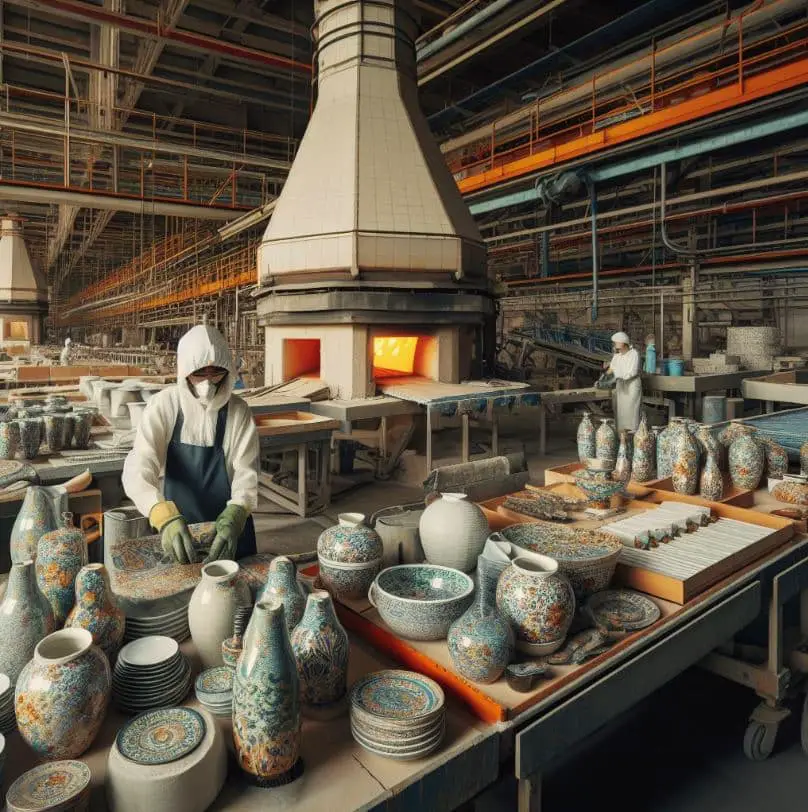
The critical role of minerals in the ceramic process is undeniable. They provide essential properties such as hardness and heat resistance. The benefits of using minerals in ceramics include improved durability and aesthetics. However, the ceramic industry also faces several challenges in using minerals, including sourcing, environmental impact, and cost. These subtopics will provide a comprehensive understanding of the importance of minerals in the ceramic industry.
Role of Minerals in the Ceramic Process
Moving from the realm of Titanium Dioxide, it’s time to delve into the broader landscape of minerals in the ceramic industry.
In the process of ceramic manufacturing, minerals play a pivotal role. First off, they constitute the primary raw materials used in production, including kaolin, feldspar, quartz, and, as previously discussed, titanium dioxide.
These minerals, often sourced directly from the earth, undergo a series of processing steps including grinding, mixing, and heating to form the ceramic products. Moreover, the choice of minerals significantly influences the properties of the final product. For instance, kaolin imparts whiteness and plasticity, while feldspar acts as a flux, lowering the melting temperature.
Finally, minerals like quartz provide structural strength to the ceramic product. This multi-faceted role of minerals underscores their centrality in the ceramic production process, and further exploration of their benefits and challenges would provide a richer understanding of this complex process.
Benefits of Using Minerals in Ceramics
Minerals provide an abundance of benefits in ceramics. Firstly, they contribute to the aesthetic appeal of ceramics, enhancing their color, texture, and finish. Certain minerals such as feldspar and quartz impart brilliant hues and a glossy sheen to the ceramic products. Secondly, minerals enhance the physical properties of ceramics. They improve the durability, hardness, and resistance against heat and chemical attacks. For instance, kaolin, a key ceramic mineral, increases the strength and heat resistance of the final product. Thirdly, minerals can also reduce manufacturing costs. They provide an inexpensive and readily available source of raw material, significantly reducing production expenses. However, it is also important to consider the challenges that come with using minerals in ceramics, an aspect that will be explored in the forthcoming section.
Challenges of Using Minerals in Ceramics
Imagine the complexities of creating a ceramic masterpiece, only to watch it crumble because the minerals used were not adequately processed. This is the reality many ceramic artists face when navigating the challenges of using minerals in ceramics.
One of the significant issues is ensuring the purity of minerals. Impurities can alter the color, texture, and overall quality of the final ceramic product. The sourcing of quality minerals also becomes a concern, with mineral deposits depleting globally. This scarcity leads to increased costs, making the ceramic industry less profitable.
What’s more? Inconsistencies in mineral composition can result in varying shrinkage rates during the firing process, causing cracks or deformations in the ceramics. Lastly, the sustainability factor poses another challenge. Mining minerals for ceramics can have severe environmental impacts, like habitat destruction and soil erosion.
Thus, while minerals play an integral role in the ceramic process, their usage is not without complications.
In conclusion, the ceramic industry relies heavily on various minerals for its production processes and final product quality. Minerals such as clay, feldspar, quartz, silica, calcium carbonate, talc, iron oxide, and titanium dioxide play pivotal roles in providing the desired characteristics to ceramics, from hardness and durability to color and finish.
These minerals not only contribute to the aesthetic appeal but also impact the technical properties of ceramics, making them suitable for diverse applications. In conclusion, minerals form the backbone of the ceramic industry, directly influencing product quality, functionality, and versatility.
